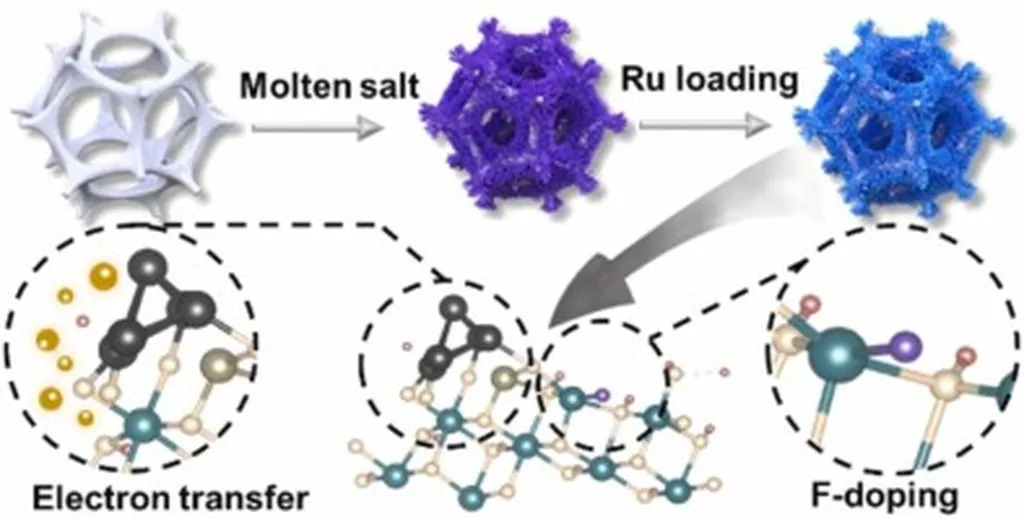In the quest for clean and sustainable energy, hydrogen has emerged as a promising contender. However, the process of producing hydrogen through electrocatalytic water splitting, particularly in alkaline conditions, has been a challenge. This is where the work of Liqiang Hou, a researcher at the State Key Laboratory of Eco-Chemical Engineering at Qingdao University of Science and Technology in China, comes into play. His recent review article, published in the journal *EcoEnergy* (translated from Chinese as “Eco-Energy”), sheds light on the design strategies of ruthenium-based materials for the alkaline hydrogen evolution reaction (HER), offering a beacon of hope for the energy sector.
Hou and his team have delved into the intricacies of ruthenium (Ru)-based catalysts, which have shown remarkable potential in the alkaline HER. “Ru-based catalysts not only deliver comparable or even superior catalytic performance relative to the platinum (Pt)/C benchmark but also come with a price advantage,” Hou explains. This makes them an attractive alternative to platinum, which has traditionally been used in these processes.
The review comprehensively summarizes the recent progress in material engineering strategies aimed at enhancing the catalytic activity of Ru-related catalysts. These strategies include electronic regulation, geometric modulation, local structure alteration, and self-optimization strategies. By understanding and manipulating these factors, researchers can significantly improve the efficiency of the hydrogen evolution reaction.
One of the most compelling aspects of this research is its potential commercial impact. The energy sector is constantly seeking ways to reduce costs and improve efficiency. Ru-based catalysts, with their superior performance and lower cost, could revolutionize the way hydrogen is produced. “The design and construction of highly active catalysts with affordable prices toward alkaline HER are effective in accelerating the overall water-splitting process,” Hou notes.
However, the journey is not without its challenges. Hou and his team also outline the hurdles that need to be overcome, such as the need for more precise control over the material’s properties and the development of more robust and stable catalysts. They also propose future research directions, emphasizing the importance of continued innovation and exploration in this field.
As the world moves towards a low-carbon, eco-friendly, and high-efficiency energy system, the work of Liqiang Hou and his team could play a pivotal role. Their research not only advances our understanding of Ru-based catalysts but also paves the way for more efficient and cost-effective hydrogen production. This, in turn, could have profound implications for the energy sector, accelerating the transition to a sustainable future.
In the words of Hou, “Extensive efforts have been made to reasonably synthesize Ru-related materials, but a careful insight into material engineering strategies and induced effects remain in its infancy.” This underscores the importance of continued research and innovation in this field, as we strive to unlock the full potential of Ru-based catalysts and revolutionize the way we produce hydrogen.

